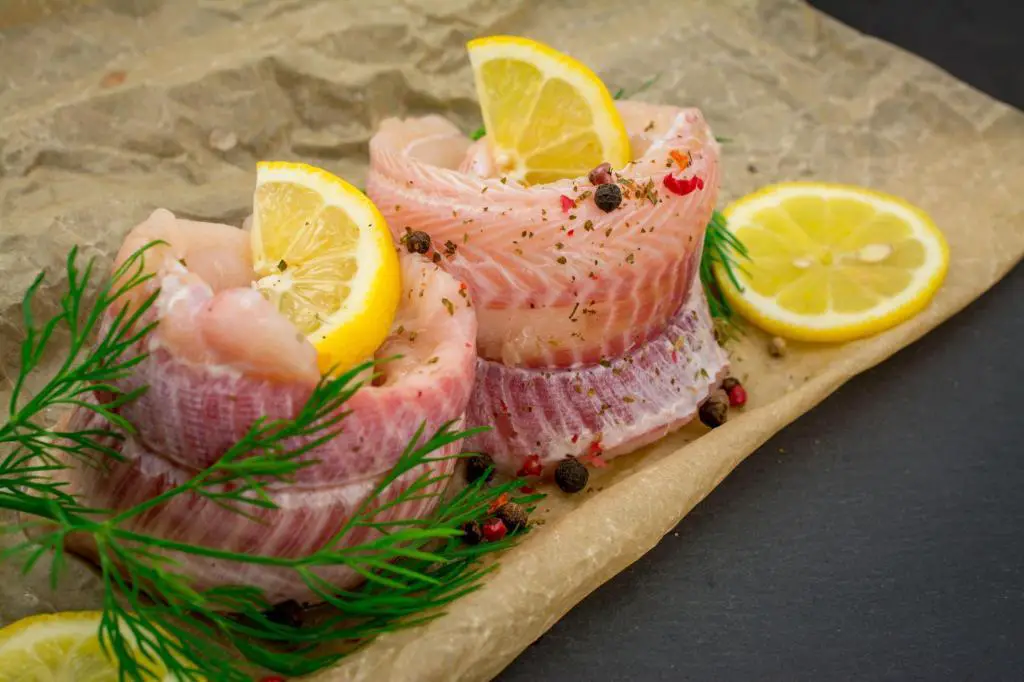Can You Eat Raw Eel? Is Raw Eel Safe to Eat?

If you’re a sushi lover, you may have wondered if it’s safe to eat raw eel. While it’s a delicacy in many Asian countries, raw eel does come with its own set of risks and considerations. In this article, we’ll talk about whether or not you can eat raw eel and what health risks you might face if you do.
Eel, a long, snake-like fish, is a popular ingredient in Japanese cuisine, where it’s known as unagi. It’s often grilled and served with a sweet sauce, but some people enjoy it raw in sushi or sashimi dishes. Raw eel is delicious, but there are some possible health risks that you should think about before you eat it.
So, is raw eel safe to eat? In short, it can be, but it’s important to take precautions to minimize the risks. In the sections that follow, we’ll talk more about the possible health risks of eating raw eel and the steps you can take to make sure your meal is safe and delicious.
Understanding Eel and Their Nutritional Value
Let’s talk about eels! These slippery creatures may not be the most appetizing thing to think about, but they’re actually quite interesting. For starters, did you know that eels are actually fish?
That’s right, despite their snakelike appearance, eels are a type of fish that belong to the family Anguillidae. They’re found all over the world, from freshwater to saltwater, and have been a source of food for humans for thousands of years.
When it comes to nutritional value, eels are actually quite healthy. They’re a great source of protein, with around 18 grams of protein per 3.5 ounces of cooked eel.
Eels are also high in omega-3 fatty acids, which are essential for heart health and brain function. In fact, eels have more omega-3s than most types of fish, making them a great choice for anyone looking to improve their diet.
In addition to that, eels are also a source of many vitamins and minerals. Cooked eel has vitamins A, D, C, and B12. It also has iron, calcium, potassium, and phosphorus.
Cooked eel contains 375 calories per serving, with 41% of the calories coming from protein and 59% coming from fat.
Benefits of Eating Eel
Eels may not be the most common choice of food, but they have been a part of human diets for centuries. These slimy creatures are not only delicious, but they also come with a host of benefits that make them worth considering.
Here are some known benefits of eating eel:
Eel is known for its high levels of omega-3 fatty acids, which have been shown to reduce the risk of heart disease, stroke, and cancer. Also, eel is low in calories and saturated fat, which makes it a healthier choice than red meat.
Collagen, which is an important part of healthy skin, hair, and nails, is found in large amounts in eels. Collagen is a great food for keeping skin looking young because it makes skin more flexible and reduces the look of wrinkles.
Also, the protein in eel helps skin cells repair and grow back, which makes it a great food for people with acne, eczema, and psoriasis.
The high levels of omega-3 fatty acids in eel also make it a great food for brain health. These fatty acids are crucial for brain development, cognitive function, and memory retention. Studies have shown that omega-3s can improve mood and reduce symptoms of depression and anxiety.
Eel also has vitamin B12, which helps the brain work well and protects against neurological diseases like Alzheimer’s and dementia.
Can You Eat Raw Eel? Is Raw Eel Safe to Eat?
If you’ve ever had sushi, you might be wondering if you can eat raw eel. The answer is yes, but there are a few things you should know before taking a bite.
First of all, not all eels are safe to eat raw. In fact, some species of eels can be toxic if not prepared properly.
Because of this, it’s crucial to only eat professionally farmed and prepared eels. Most of the time, eels that are sold raw are carefully chosen and prepared to make sure they are safe.
Secondly, raw eel has a unique texture that might not be to everyone’s liking. Unlike other types of raw fish, which are typically served in thin slices, raw eel is usually served in thicker pieces that can be quite chewy. Some people find this texture unpleasant, while others love it.
Last but not least, raw eel is not eaten as often as raw tuna or salmon. If you’re not sure if you’ll like the taste or texture of raw eel, it might be worth trying it in a cooked dish first before taking the plunge and trying it raw.
Are Raw Eel Poisonous?
Raw eel is considered poisonous because it contains a toxic protein in its blood called ichthyotoxin, which can cause muscle cramps, respiratory distress, and even death in severe cases. The toxin can cause the muscles, including the heart, to cramp up, leading to serious health complications. This is why raw eel is never consumed, and why it must be cooked before eating to destroy the toxic proteins and make it safe to consume.
While there has been some debate on whether raw eel blood can be safely consumed, take note that there is no scientific evidence to support this claim. The idea that pepsin, an enzyme in the stomach that helps break down food, can break up the toxic proteins in eel blood is just a theory that hasn’t been proven. Still, eating raw eel blood is thought to be very bad for your health and is not recommended.
Eel is considered a delicacy in many parts of the world, but it must be properly cooked to ensure that it is safe for consumption. Grilling, baking, or frying eel is the safest way to consume it. Please make sure the eel is fresh and kept at the right temperature so that harmful bacteria don’t grow.
Health Risk and Side Effects of Eating Raw Eel
While it’s possible to eat raw eel, please understand the potential health risks and side effects associated with consuming it.
Some of the most common things that happen when you eat raw eel are food poisoning, stomach cramps, diarrhea, and throwing up.
Here are several health risks to consider when it comes to eating raw eel:
- Risk of Parasites: Raw eel can contain parasites such as Anisakis, which can cause a condition known as anisakiasis in humans. Symptoms of anisakiasis include nausea, vomiting, abdominal pain, and diarrhea. To reduce the risk of parasite infection, it is recommended to freeze eel for at least 48 hours before consuming it raw. This process kills any parasites that may be present in the fish.
- Liver Toxicity: Eel liver contains a high level of thiaminase, an enzyme that can break down thiamine, a vitamin essential for nerve function and energy production. Consuming too much eel liver, especially raw, can lead to thiamine deficiency and cause symptoms such as muscle weakness, confusion, and nerve damage. It is recommended to limit the consumption of eel liver, and if you choose to eat it, make sure it is thoroughly cooked.
- Heavy Metals Contamination: Heavy metals, like mercury, are also found in raw eel, which could be bad for your health if you eat it. Like many other types of fish, eels can absorb heavy metals from the water in which it lives. Over time, these metals can build up in the eel’s tissues, which could be harmful to the health of those who eat it. To reduce the risk of heavy metal contamination, you need to consume eel in moderation and choose sources that are known to be free from pollutants.
How to Safely Consume Raw Eel
Proper preparation of raw eel is crucial to avoid any potential health risks. Eel must be kept clean and handled carefully to avoid contamination. Sushi chefs also need to be trained and licensed to make sure they know how to handle and make sushi the right way. Only consume raw eel from reputable sources that follow proper safety protocols.
Here are three tips for safely consuming raw eel:
- Choose a reputable source: When it comes to consuming raw seafood, it’s essential to choose a reputable source. Look for sushi restaurants that are well-known for their quality and safety standards. A good sushi chef will make sure the eel is fresh and free of any parasites or bacteria that could make it sick. Additionally, they will follow strict protocols for handling and preparation to reduce the risk of contamination.
- Freeze the eel: Freezing eel is an effective way to reduce the risk of parasites, such as Anisakis. It’s recommended to freeze the eel for at least 48 hours before consuming it raw. This process will kill any parasites that may be present in the fish. If you’re unsure about the safety of the eel you have purchased, consider freezing it for an extended period to be extra cautious.
- Handle the eel with care: Proper handling of raw eel is crucial to reduce the risk of contamination. When handling the eel, wear gloves and keep the fish away from other foods. It’s essential to keep the eel clean and rinse it thoroughly with cold water before preparing it. Additionally, it’s recommended to use a clean and sharp knife to prevent any tearing or damage to the flesh of the fish.
- Pay attention to your body’s signals: If you experience any symptoms of food poisoning after consuming raw eel, such as nausea, vomiting, diarrhea, or stomach cramps, seek medical attention immediately. These symptoms may indicate a foodborne illness that requires prompt treatment.
- Consume in moderation: While eel is a nutritious source of protein and omega-3 fatty acids, it is also high in cholesterol. Consuming large amounts of eel, particularly raw eel, can increase your cholesterol levels and may have adverse health effects. As with any food, you should enjoy eel in moderation as part of a balanced diet.
Raw Eel vs. Cooked Eel: Which One Is Better?
While they both come from the same ell, they’re prepared in very different ways, each with their own unique flavor and texture. So, which one is better? Let’s take a closer look.
Raw eel, also known as “unagi shirayaki,” is often served in Japanese cuisine. It’s typically sliced thinly and served with soy sauce, wasabi, and other seasonings. Raw eel has a delicate texture and a sweet, buttery flavor that some people find irresistible.
WARNING
However, raw eel carries a risk of foodborne illness if it’s not fresh or handled properly. Also, as we’ve already talked about, unagi blood contains a toxin that can make people sick if they eat it, so the eel needs to be properly cooked.
Cooked eel, on the other hand, is a popular dish in many cuisines. It’s often grilled or steamed and served with a variety of sauces and spices. Cooked eel has a firmer texture and a smoky, savory flavor that’s hard to resist. Cooking eel not only gets rid of any possible toxins, but also makes the fish taste and feel better. Cooked eel can be enjoyed with rice, noodles, or as part of a sushi roll.
Ultimately, the decision between raw and cooked eel comes down to personal preference and safety concerns.
How Many Raw Eels Should You Eat in a Day?
When eating raw eel, think about the possible health risks and the right amount to eat. While raw eel can be a delicious and nutritious part of a balanced diet, overconsumption can lead to health problems.
The recommended serving size for raw eel is about 2–3 ounces per day. This amount provides a good source of protein, omega-3 fatty acids, and other nutrients. However, keep in mind that raw eel can contain harmful bacteria and parasites if it’s not properly handled and cooked. To lower the risk of getting sick, it’s best to eat raw eel in small amounts and from reliable sources.
Consuming too much raw eel can also lead to a thiaminase deficiency. This is because raw eel contains an enzyme called thiaminase that breaks down vitamin B1, which can lead to a deficiency if consumed in large amounts over a long period of time. Symptoms of a thiaminase deficiency include fatigue, weakness, and nerve damage. To avoid this, it’s recommended to balance your raw eel consumption with other sources of vitamin B1, such as whole grains, legumes, and vegetables.
How to Incorporate Raw Eels into Your Diet

Raw eel is not a good addition to your diet because of the possible health risks that come with eating raw seafood. Raw eel contains a toxic protein in its blood that can cause muscle cramps, respiratory distress, and even death in severe cases.
So, make sure that any eel you eat is cooked the right way to get rid of the toxins and make it safe to eat.
If you enjoy the flavor of eel and want to incorporate it into your diet, there are several ways to do so safely. One popular dish is eel sushi, which is made with grilled or baked eel and sushi rice. This dish is often topped with a sweet and savory sauce made from soy sauce, sugar, and mirin, a type of rice wine. Eel sushi is a delicious and healthy way to enjoy eel, but make sure that the eel is properly cooked before it is consumed.
Another way to incorporate eel into your diet is by adding it to a stir-fry. Eel is a very versatile food that goes well with many different vegetables and sauces. This makes it a great ingredient for a stir-fry. Simply cook the eel on a flat grill top or in a nonstick pan with oil, then add it to your favorite stir-fry recipe.
Lastly, you can add eel to soups or stews to make them taste better and be healthier. Eel is high in protein and omega-3 fatty acids, making it a nutritious addition to any dish. To incorporate eel into your soup or stew, simply add it to the pot during the last few minutes of cooking, as it cooks quickly and can become tough if overcooked.






